Agriculture

I have had abundant opportunity of estimating the impediments which stand in the way of scientific doctrines passing into the domain of practical Agriculture. The reason of which is, especially, that no connexion was formed between Practice and Science. | more…
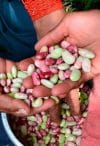
Few countries and political processes have been subject to such scrutiny, yet so generally misunderstood, as Venezuela and the Bolivarian Revolution. This is particularly true today, as the international media paints an image of absolute devastation in the country, wrought by failed policies and government mismanagement. One way to comprehend the complexities of what is happening in Venezuela today—missed entirely by the dominant, mainstream narrative—is by homing in on the dynamics around Venezuela’s most highly consumed staple foods. | more…
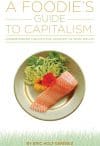
Capitalism drives our global food system. Everyone who wants to end hunger, who wants to eat good, clean, healthy food, needs to understand capitalism. This book will help do that. In his latest book, Eric Holt-Giménez takes on the social, environmental, and economic crises of the capitalist mode of food production. Drawing from classical and modern analyses, A Foodie’s Guide to Capitalism introduces the reader to the history of our food system and to the basics of capitalism. In straightforward prose, Holt-Giménez explains the political economics of why—even as local, organic, and gourmet food have spread around the world—billions go hungry in the midst of abundance; why obesity is a global epidemic; and why land-grabbing, global warming, and environmental pollution are increasing. | more…

Women's Labor and Resistance in Eastern India
Neoliberal development has opened the eastern Indian state of Odisha to mining companies and steel conglomerates, threatening the region’s ancient subsistence economies and provoking a fierce resistance, in which women have taken a leading role. | more…

Thanks to breakthroughs in production and food science, agribusiness has been able to devise new ways to grow more food and get it more places more quickly. There is no shortage of news items on the hundreds of thousands of hybrid poultry—each animal genetically identical to the next—packed together in megabarns, grown out in a matter of months, then slaughtered, processed, and shipped to the other side of the globe. In Big Farms Make Big Flu, a collection of dispatches by turns harrowing and thought-provoking, Rob Wallace tracks the ways influenza and other pathogens emerge from an agriculture controlled by multinational corporations. | more…
From humanitarian and ecological viewpoints, many aspects of the capitalist economic system are irrational; although they are certainly rational from the more limited standpoint of the individual business or capitalist seeking to make profits.… With regard to the environment there are scores of examples of irrational behavior by capitalist businesses that have the ultimate goal of making profits. Many practices and side effects of the way the system functions degrade the ecosystem and its processes on which we depend and may also directly harm humans. For example, it is not rational to introduce chemicals into the environment, including into products we use daily, that are either toxic or cause illnesses of various types. Yet there are over 80,000 chemicals used in the United States; few of them are tested for their effects on people or other species, and many commonly used ones are suspected to be carcinogens or have other detrimental effects. | more…
Last summer, astrophysicist Neil DeGrasse Tyson was asked to comment on the furor surrounding genetically modified organisms (GMOs). He responded with the assertion that humans have been genetically modifying organisms for millennia, giving us food crops such as seedless watermelons or corn. This process, he stated, is little different from genetic engineering.… Tyson’s first mistake lies in his equation of artificial selection and genetic modification, reflecting common misunderstandings of both the sources of genetic variation and the distinction between the latter and mechanisms of evolutionary change. Tyson’s second mistake is his failure to see the bigger picture. The dynamic of capital accumulation is fundamentally at odds with ecosystem dynamics. And technology, in our society, is the handmaiden of capital accumulation. This article will elaborate on these distinctions and discuss some of the basic biological processes underlying GMOs and their potential risks, especially risks of dispersal. It will then examine how capitalism molds the technology and accentuates the risks. | more…
From Wild Fish to a Genetically Modified Species
On February 25, 2013, the U.S. Food and Drug Administration (FDA) closed the public comment period for the environmental assessment of the AquAdvantage Salmon. Their review of the first genetically modified animal for human consumption concluded with a “finding of no significant impact.” Numerous fishermen, consumer safety advocates, public health officials, ecologists, and risk assessment experts submitted comments that directly challenged this finding. Despite the opposition, it is very likely that the FDA’s approval of this genetically engineered salmon and precedent-setting regulatory process is imminent.… The aquaculture industry and corporate investors are championing this recent development in food biotechnology. They propose that this “invention” will yield ecological benefits, such as preserving wild salmon, while enhancing efficiency.… Unfortunately, the discussion of fisheries and oceans is constrained by ideological justifications that prevent a comprehensive assessment.… [The alternative approach presented here focuses on] how the logic of capital has shaped production and commodification processes. It also highlights how the most recent case of biotechnology in relation to salmon serves the needs of capital by increasing control of biological and ecological systems in order to better conform to economic dictates. The genetic modification of salmon is part of a biological speedup, whereby natural processes are transformed to achieve faster rates of return in the food marketplace. | more…
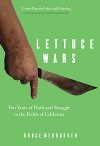
In 1971, Bruce Neuburger–young, out of work, and radicalized by the 60s counterculture in Berkeley–took a job as a farmworker on a whim. He could have hardly anticipated that he would spend the next decade laboring up and down the agricultural valleys of California, alongside the anonymous and largely immigrant workforce that feeds the nation. Part memoir, part informed commentary on farm labor, the U.S. labor movement, and the political economy of agriculture, Lettuce Wars is a lively account written from the perspective of the fields. | more…
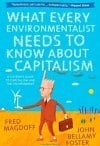
There is a growing consensus that the planet is heading toward environmental catastrophe: climate change, ocean acidification, ozone depletion, global freshwater use, loss of biodiversity, and chemical pollution all threaten our future unless we act. What is less clear is how humanity should respond. The contemporary environmental movement is the site of many competing plans and prescriptions, and composed of a diverse set of actors, from militant activists to corporate chief executives. | more…
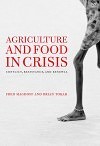
The failures of “free-market” capitalism are perhaps nowhere more evident than in the production and distribution of food. Although modern human societies have attained unprecedented levels of wealth, a significant amount of the world’s population continues to suffer from hunger or food insecurity on a daily basis. In Agriculture and Food in Crisis, Fred Magdoff and Brian Tokar have assembled an exceptional collection of scholars from around the world to explore this frightening long-term trend in food production. While approaching the issue from many angles, the contributors to this volume share a focus on investigating how agricultural production is shaped by a system that is oriented around the creation of profit above all else, with food as nothing but an afterthought. | more…
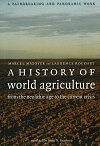
Only once we understand the long history of human efforts to draw sustenance from the land can we grasp the nature of the crisis that faces humankind today, as hundreds of millions of people are faced with famine or flight from the land. From Neolithic times through the earliest civilizations of the ancient near East, in savannahs, river valleys and the terraces created by the Incas in the Andean mountains, an increasing range of agricultural techniques have developed in response to very different conditions. These developments are recounted in this book, with detailed attention to the ways in which plants, animals, soil, climate, and society have interacted. | more…








